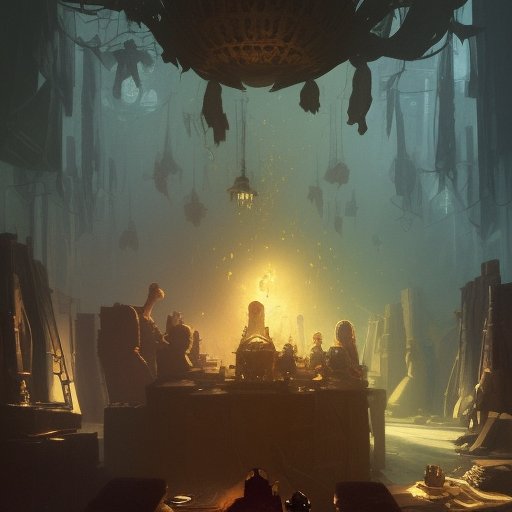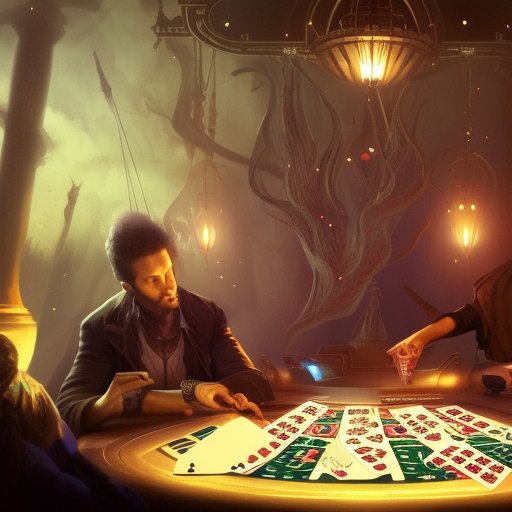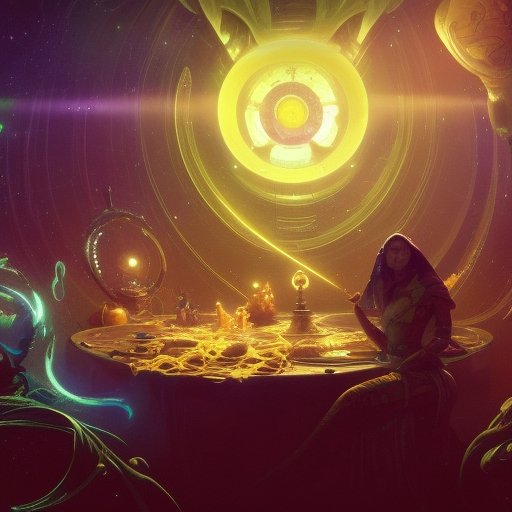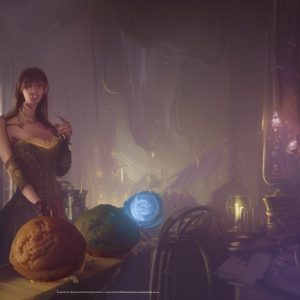
Consider the Alignment system of Dungeons and Dragons. It’s a crucial aspect of a game’s RPG elements and can make or break your character. But the nine Alignments might confuse even experienced players. This article breaks down each Alignment into easy-to-understand terms. We’ll explain the differences between Good and Evil, Lawful and Chaos, as well as the three Neutral Alignments. Plus, we toss in an amusing twist with a food metaphor. Learn how each Alignment represents a particular muffin or sweet, and what it says about the character’s motivations. With our guide, you’ll be able to pick the best alignment for your character and have a sense of its importance when striving for your character’s goals.
I. Introduction
Ladies and Gentlemen, Parania, Jorgonia, no matter where you are, we are here today for a most auspicious occasion. We are gathered to pay tribute to the nine alignments that have ruled the roleplaying world since the early days of Dungeons and Dragons. Yes, you heard it right. Alignments! The backbone of the game, the guiding principles that dictate how characters interact with each other, the world, and themselves. And yet, do we even know what they mean? Truly? I’m not so sure.

You see, dear reader, we’ve been talking about these alignments for decades now, but do we really understand what it means to be Lawful Good, or Chaotic Evil? Do we understand the nuances between True Neutral, Neutral Good, or Neutral Evil? These are questions that we have to ask ourselves, and there’s no better time than now to do so.
Now, I know what you must be thinking. “Boring! Give me more dragons, more spells, more epic battles!” But hold on a moment, my friend. What if I told you that the alignments are just as exciting, if not more so? What if I told you that understanding the alignments is the key to unlocking hidden truths about the game? And what if I told you that I have a secret weapon: muffins, cakes, and candies? Yes, you heard me right.
So, put down your dice for a moment, and join me on a journey through the nine alignments. We’ll delve into what each one means, and how they relate to each other. We’ll explore the concept of good and evil, chaos and law, and the shades of gray in between. And all the while, we’ll do it in a fun and light-hearted way, with muffins, cakes, and candies as our guides.
So, buckle up, my friends, and get ready to explore the fascinating world of alignments. It’s going to be a wild ride!
II. Understanding alignment basics
Alignment, quite simply put, is a way to classify the moral and ethical outlook of your character. There are nine alignments in total in Dungeons and Dragons, split into three broad categories – Lawful, Neutral, and Chaotic – each with its own unique philosophical concept that underpins it.

The Lawful alignments focus on stability and order, with an emphasis on laws, rules, and traditions. Lawful Good, for instance, is about upholding laws and serving society, while Lawful Evil is about the exercise of power through laws and domination.
On the other end of the spectrum are the Chaotic alignments, which stress individuality, freedom, and spontaneity. Chaotic Good characters value personal freedom and fairness while Chaotic Evil characters tend to be driven by greed and desire for power.
In the middle, we have the Neutral alignments that are typically seen as a balance or a midpoint between the other six alignments. They allow characters to take a step back and make decisions that are more objective and less colored by ideology. True Neutral is the most balanced of the nine alignments, with no real allegiance or personal motive.
It’s essential to keep in mind that Alignment is not necessarily the same as personality or even personal morality. People are complex and multifaceted, and so too are our characters. The Alignment system is merely a tool to help us understand the broad strokes of a character’s moral and ethical outlook.
So, how does alignment fit into larger philosophical concepts? Philosophers have long debated the role of morality and ethics in society. Still, some would argue that the Nine Alignments capture some of the most fundamental and universal moral structures that underpin human behavior.
In other words, the system of Alignment in Dungeons and Dragons isn’t just a fun game mechanic; it is also a reflection of the moral and ethical landscape that we all navigate in real life.
III. Good vs Evil
Good vs Evil. The classic conflict that has been a staple of storytelling since the dawn of time. In Dungeons and Dragons, the dichotomy is represented by two distinct alignments, Lawful Good and Chaotic Evil. On one side, we have characters who embody the ideals of justice, compassion, and selflessness. On the other, we have those who prioritize their own desires above all else, resorting to violence, deception, and cruelty to achieve their goals.

But what does it mean to be “good” or “evil” in the context of D&D? And how do these concepts manifest in character creation, storytelling, and morality? For starters, it’s important to understand that alignment is not a one-size-fits-all approach. Just as there are many shades of gray in between the nine alignments, there are also many interpretations of what it means to be “good” or “evil.”
For some players, being good simply means doing what’s right and helping those in need, regardless of the consequences. For others, being evil means pursuing power and wealth, and not letting anyone stand in their way. These interpretations can inform not just a player’s character creation choices but also how they approach storytelling and gameplay.
For example, a Lawful Good character might go out of their way to assist villagers in need, even if it means risking their own safety. Meanwhile, a Chaotic Evil character might burn down a village just for the thrill of it. These actions, though extreme, illustrate the fundamental differences between the two alignments.
But beyond gameplay and storytelling, alignment also has moral implications. Is it inherently “better” to be Lawful Good than Chaotic Evil? Or is there more nuance to the situation? This question is at the heart of moral philosophy, and it’s up to each player to decide for themselves.
In the end, though, the conflict between good and evil is what drives much of the action in D&D and other roleplaying games. Whether you prefer to play as the shining knight on a quest for justice or the cunning villain plotting world domination, alignment offers a way to explore the depths of human (and non-human) nature and ask the big questions that define us all.
IV. Chaotic vs Lawful
Let’s talk about chaos and law, my dear interstellar friends. These are two sides of the same coin, and yet they couldn’t be more different. Chaotic characters live for the moment, reveling in the unpredictability of life. They are free spirits, who reject limitations and institutions, opting instead for personal freedom and unconstrained expression.
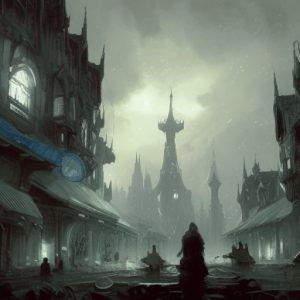
On the other side of the coin, we have the lawful characters. These individuals seek structure, hierarchy, and control. They adhere to codes, laws, and traditions, finding meaning in the order they create. They believe that rules bring stability, and that discipline and fidelity are virtues to be prized above all else.
So how do these two worldviews clash in a game of Dungeons and Dragons? Well, for starters, they create some fun, rollicking role-playing moments. Think of it like this: when a chaotic character and a lawful character are placed in the same party, you get that lovable odd-couple dynamic. The chaotic character acts as the flippant, impulsive wildcard, while the lawful character is the butt of their jokes, reacting with moral outrage or indignation.
But there’s more to it than just surface-level humor. The conflict between chaos and law forces the characters to confront fundamental questions about the nature of society and individuality. Is personal freedom more important than civic responsibility? Is tradition a crutch or a cornerstone of civilization? How do you balance personal expression against social order?
These are loaded questions, with no easy answers. And that’s what makes chaotic vs. lawful alignments so captivating. They reveal the complexities of human nature, and how different people can approach the same problem with wildly different philosophies. In the end, it’s up to the players to decide where they fall on the spectrum. Do they embrace chaos or law? Do they reject both in favor of a more moderate approach? The choice is theirs, and the consequences are sure to be fascinating.
V. Neutral alignments
Now let us explore the world of neutrality, the alignment that often seems to straddle the fence between good and evil, lawful and chaotic. At first glance, neutrality may seem like a cop-out, a way to avoid committing to one side or the other. But in reality, neutrality is its own distinct entity, with its own unique strengths and weaknesses.
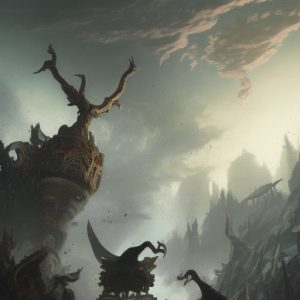
The three neutral alignments – True Neutral, Neutral Good, and Neutral Evil – can be thought of as a midpoint between the other six alignments. True Neutral occupies the center of the alignment chart, representing a balance between law and chaos, good and evil. Neutral Good leans more towards good than evil, while Neutral Evil leans more towards evil than good.
A True Neutral character is often motivated by a desire to maintain the cosmic balance, to prevent any one force from gaining too much power. They are more likely to value individual freedom than strict adherence to rules or morality. A Neutral Good character may share some of these tendencies, but their focus is on doing good for its own sake. They may be willing to work outside the law to do what they feel is right. On the other hand, a Neutral Evil character may be willing to take extreme measures to achieve their goals, even if those goals are decidedly evil.
One way to think of Neutral alignments is as the Swiss Army Knife of the alignment chart. They are adaptable, able to fit into a wide range of situations and settings. And yet, this adaptability can also be a liability. Without a strong moral or ideological compass, they may struggle to make difficult decisions or commit to a course of action.
VI. Alignments and muffins
Now, I know what you must be thinking: “How can muffins possibly explain the intricacies of the nine alignments?” Well, buckle up and get ready to ride the buttercream rollercoaster because we’re about to find out!

First off, let’s start with Lawful Good. This alignment is like a classic blueberry muffin – sweet, reliable, and always there for you. The Lawful Good character is a paragon of virtue, upholding the law and doing good deeds wherever they go. Just like a blueberry muffin, they’re a solid choice and always welcome at any table.
Next, we have Chaotic Good, the apple cinnamon muffin of the alignment world. This character is a rebel with a heart of gold, fighting against the system to do what’s right. They’re unpredictable, just like the surprise burst of apple in a cinnamon muffin. And yet, they’re also warm and comforting, the perfect pick-me-up after a tough day.
Moving on to Neutral Good, imagine a honey muffin – simple, pure, and just the right amount of sweetness. This alignment is all about doing good without worrying about the law or being a rebel. Think characters who are all about helping others, even if it means breaking a few rules along the way. They’re like honey, sweet in their intentions but not to be taken lightly when provoked.
Now, what about Lawful Neutral, the bran muffin of alignments? This character may seem boring on the surface, but just like a bran muffin they’re filling and full of substance. Lawful Neutral characters live by a code, even if it means going against their own beliefs. They’re the ones who will follow orders to the letter and always do the “right” thing, even if it’s not what they want to do.
Chaotic Neutral, on the other hand, is more like a chocolate chip muffin – full of surprises and definitely not at all predictable. These characters are free spirits, not tied to any code or morality. They live in the moment, doing whatever feels right at the time. And just like a chocolate chip muffin, you never know what you’re going to get.
Now, let’s move on to Lawful Evil – the savory meat muffin of the alignment world. These characters are all about following the rules, but for their own gain. They may look benign on the outside, but underneath lies a cold, calculating heart. They play the game of politics, manipulating others to get what they want. They’re like a meat muffin – nourishing on the surface, but hiding a darker side within.
Chaotic Evil, then, is like a jalapeño and cheese muffin – unpredictable and possibly dangerous. These characters are all about destruction and mayhem, doing whatever it takes to further their own goals. They’re not bound by any moral code, making them a wild card in any situation. Just like a jalapeño and cheese muffin, they may seem harmless at first, only to burn you when you least expect it.
Finally, we come to Neutral Evil, which is the black coffee of muffins – harsh, bitter, and unquestionably powerful. These characters are self-serving and manipulative, only looking out for number one. They’ll do whatever it takes to get ahead, even if it means stepping on those around them. Just like black coffee, they’re an acquired taste and certainly not for everyone.
So there you have it, folks – the nine alignments, all explained in delicious muffin terms. What do your favorite muffins say about you and your characters? It’s time to take a bite and find out.
VII. Alignments and candies
But now, dear reader, let’s talk about the fun stuff, shall we? Because until you know which candy brand epitomizes each alignment, how can you truly understand it?
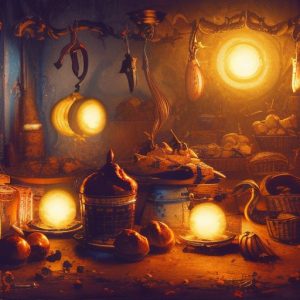
Starting with Lawful Good, we have the classic M&M’s. Why, you may ask? Because, like the alignment itself, M&M’s are a reliable and straightforward treat. They may not be the most exciting candy out there, but they’ll always be there for you when you need a quick sugar fix.
Next up, we have Neutral Good, which I’d argue is best represented by Skittles. Skittles are a colorful and sweet candy that can make you happy with every bite. They’re not too sugary, not too sour – they’re just right. And that’s what Neutral Good is all about, finding balance and harmony.
Chaotic Good is a tough one, but I’d have to say that Sour Patch Kids are the perfect candy embodiment of this alignment. They represent the unpredictability and wildness of Chaotic Good. They may start off sour, but end up sweet – just like how Chaotic Good characters may not always follow the rules, but ultimately do what’s right.
Moving onto Lawful Neutral, we have another classic: Hershey’s Chocolate. Like Lawful Neutral characters, Hershey’s Chocolate is a solid and reliable choice, but not necessarily the most exciting or adventurous. Sometimes you just need a straightforward and dependable candy, and that’s what Hershey’s offers.
True Neutral is perhaps the most mysterious of all the alignments, so it’s fitting that it’s represented by Jelly Belly jelly beans. With so many different flavors and combinations, Jelly Belly beans are unpredictable and complex, much like how True Neutral characters can’t be easily labeled as “good” or “evil.”
Chaotic Neutral is where we start to get into the really exciting candies, and I would argue that Pop Rocks are perfect for this alignment. They’re unpredictable, fun, and a little bit dangerous. You never know when they’re going to pop in your mouth, just like how Chaotic Neutral characters keep everyone on their toes.
For Lawful Evil, we have the often-maligned black licorice. Like Lawful Evil characters, black licorice may not be the most popular or appreciated candy, but it’s always there, lurking in the background, waiting for its opportunity to shine.
And finally, for Chaotic Evil, we have the ultimate candy of chaos – Warheads. They’re sour, they’re intense, and they’re not for the faint of heart. Just like how Chaotic Evil characters revel in destruction and mayhem.
And there you have it, dear reader. A new way to understand the alignments, through the lenses of muffins, cakes, and candies. So, the next time you’re playing DD or just indulging in a sweet treat, remember the alignment that it represents, and let that guide your journey.
VIII. Conclusion
And there you have it, folks. Our journey through the nine alignments has finally come to an end. We’ve explored the depths of good and evil, the complexities of chaos and order, and the nuances of neutrality. We’ve examined each alignment through the lens of muffins, cakes, and candies and seen how each one has its own unique flavor and texture.

But why does it matter? Why spend so much time discussing alignments when we could be out there slaying dragons and looting dungeons? The answer is simple: alignments are the heart and soul of the game. They inform every decision we make as players and every move our characters take as they journey through the world.
Understanding alignments isn’t just crucial for gameplay, though. It’s also essential for storytelling and moral reasoning. By placing characters within these moral frameworks, we can create complex and compelling narratives that explore the nature of good and evil, the meaning of justice, and the consequences of our actions.
So, the next time you sit down to play DD, remember the importance of alignments. Remember that they are more than just a set of arbitrary rules. They are the foundation upon which the game is built. And most importantly, remember that the truest alignment of all is the alignment of our hearts.
With that, we end our journey through the alignments, with a call back to the beginning. We began with a joke, so it’s only fitting that we end with one too. A Lawful Good walks into a bakery and orders a muffin. The Chaotic Evil behind the counter hands them a cupcake instead. And the True Neutral beside them simply shrugs and takes whatever is left. It may be a silly joke, but it highlights the beauty of the alignments: that they are not set in stone, that they can be interpreted in different ways, and that ultimately, they are up to us to choose. So, until next time, may your dice rolls be high, your muffins be hot, and your alignments be true.
